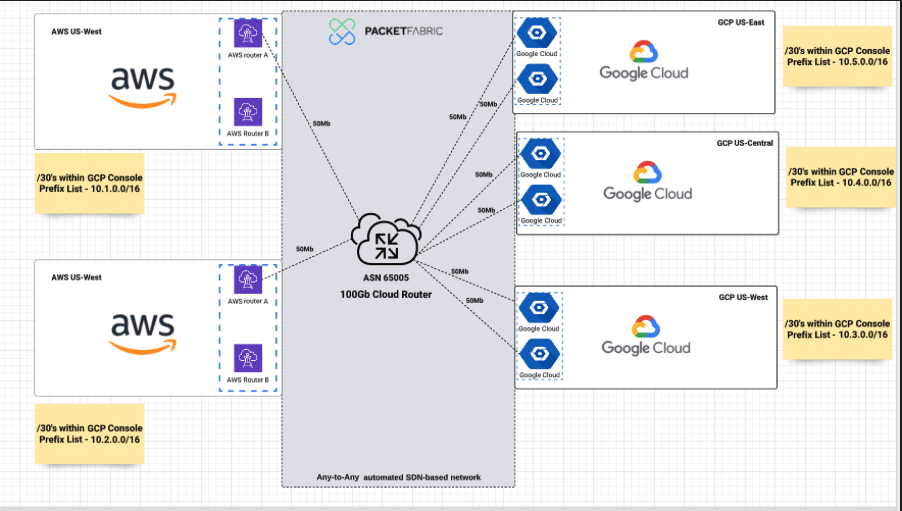When one of the fastest growing fintech companies in the world approached us to redesign its network to better support software development, we told the customer that building a network around our 100G Virtual Cloud Routers would give the company’s network higher capacity, better redundancy, and improved security.
The company runs a payments platform that enables business owners to receive payments from anywhere. It has since expanded its services to other offerings such as inventory management and appointment booking. The company was using all the major cloud service providers to support software development, both in production and testing. To connect to its cloud environments, the company used a mix of traditional connectivity, software-defined networking, and the network connectivity provided by the clouds.
The customer wanted to simplify the way they moved data from workloads between clouds, but they didn’t want to sacrifice security. They wanted to ensure that cloud-to-cloud traffic would be encrypted. And they wanted their new network design to be built with redundancy in mind.
Multi-cloud and Multi-region
The company had workloads in multiple clouds in multiple regions. They were using Google Cloud and AWS in both the East and the West, and needed data to traverse the country in many cases.
We set up two Virtual Cloud Routers in the East and two in the West for redundancy, with four dedicated 10G connections between the virtual devices.

Security: A Key Driver
The customer wanted to test the security of the PacketFabric underlay before committing to replacing the network design they were using. We ran a Proof of Concept (PoC) for them that pushed data at 1G without advertising the traffic so that their security team could evaluate the level of data security on PacketFabric’s carrier-grade network. The security team checked whether the solution complied with Google Cloud’s firewall rules, as well as the company’s own compliance requirements.
Our 100G Virtual Cloud Router was able to apply the company’s firewall rules at Layer 3, and the company was happy with the ability to control the security level of its data at Layer 2 and Layer 3 across the network.
Supporting ECMP
The customer also looked to turn up diverse VLAN attachments to Google Cloud and wanted its network solution to support ECMP (equal-cost-multi-path), which the PacketFabric network does. ECMP is a routing strategy that allows next-hop packet forwarding to happen over multiple “best paths” based on routing metric calculations. On the PacketFabric network, traffic can be directed algorithmically across dozens of alternate paths between locations in the case of an impacted service affecting any of one of the paths.
Capacity Counts
Once the company was comfortable with the level of security on the PacketFabric network, it expanded their usage of Virtual Cloud Routers. After testing the network at 1G, it began pushing 10G, and then eventually increased capacity to 100G.
Results
Today, the customer has eight of our 100G Virtual Cloud Routers deployed across their network, connecting their multi-cloud workloads.
The company is happy with its current network design for the flexibility, throughput, security, and redundancy that it offers. Most importantly, its multi-cloud software development environments are well connected, resilient, and performant.
Want to learn more about using PacketFabric 100G Virtual Cloud Routers in your multi-cloud network design? Talk to one of our sales engineers.